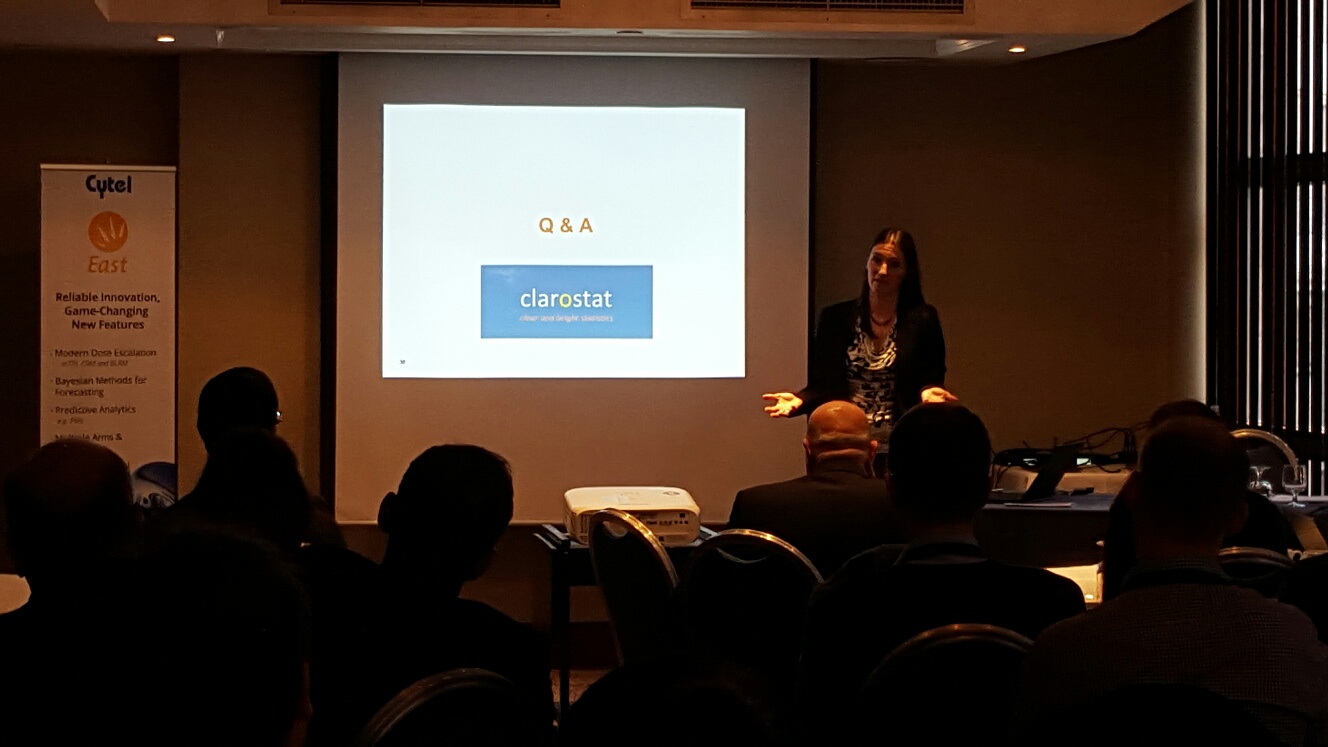HTAs: Adjusting Overall Survival for Treatment Switch

 We continue our series of blogs covering the expert presentations from the EAST User Group Meeting. Consultant Claire Watkins of Clarostat provided a different statistical focus, moving the discussion to a later point in the product lifecycle and the area of Health Technology Assessment. Her presentation, which tackled the topic of Adjusting Overall Survival for Treatment switch, shared the recommendations of a cross-institutional statistical working group ( Sub team of the PSI HTA Special Interest Group).
We continue our series of blogs covering the expert presentations from the EAST User Group Meeting. Consultant Claire Watkins of Clarostat provided a different statistical focus, moving the discussion to a later point in the product lifecycle and the area of Health Technology Assessment. Her presentation, which tackled the topic of Adjusting Overall Survival for Treatment switch, shared the recommendations of a cross-institutional statistical working group ( Sub team of the PSI HTA Special Interest Group).
Statisticians have crucial role to play in the area of health economics and health technology assessments since payers like regulators require submissions which are robust and evidence based. However there are key differences in the perspectives of regulators and HTA agencies posing different challenges for statisticians involved in such submissions.
A Health Technology Assessment (HTA) aims to answer questions of purchasers, providers and users of health services on effectiveness and cost effectiveness of interventions. For example organizations such as NICE in the UK provide guidelines on the clinical and cost effectiveness of selected new and established technologies to the National Health Service.
The issue of adjusting overall survival for treatment switch is one statistical challenge which comes into play in the context of HTAs.
Treatment switch is when patients in a parallel group RCT may switch or 'crossover' to the alternative treatment at some point before an endpoint of interest occurs. This may either be built into the protocol, or may happen spontaneously due to clinical practice in the region. Such switching commonly occurs in oncology trials, but may also occur in other therapeutic areas. In such cases, a standard “intention to treat" (ITT) analysis of the overall survival (OS) associated with the new treatment will be biased and underestimate the OS advantage of the new intervention if control group patients switch treatments and benefit from the new treatment.
Different Perspectives of HTA bodies and regulators
Regulators and HTA bodies have very different perspectives on this issue, which Claire discusses in her talk. For regulators who are evaluating efficacy within a clinical trial setting,since switch has happened as part of the clinical trial, they want ITT to be used for primary analysis. In some cases they may consider switch –adjusted Overall Survival as a supportive analysis only. On the other hand, HTAs are evaluating effectiveness in real world setting, and a treatment switch that has occurred in a clinical trial setting for the most part doesn’t represent what would actually happen in clinical practice. Therefore some HTA bodies will consider 'plausible' methods of adjusting OS to remove switch. Claire points out that what is considered to be 'plausible' can vary substantially by HTA body. For HTAs, a key endpoint for lifetime cost effectiveness calculations is survival, and therefore it’s important to achieve a robust estimate of what survival will be over a lifetime horizon.
Methodologies for Adjusting for Switch
Claire discusses naïve and more complex methodologies to adjust for switch. Unsurprisingly, these simpler approaches which may exclude or censor switchers, are subject to high levels of selection bias because switching is likely to be associated with prognosis.
She also provided overviews of more complex methodologies which aim to reduce bias including Inverse Probability of Censoring Weighting (IPCW) which weight non-switchers by patient characteristics predictive of switch, and Rank Preserving Structural Failure Time Models (RSPFT) which looks to estimate counterfactual survival.
It was clear there isn’t a one size fits all solution. However, it is critical to have a transparent and robust process to select the most appropriate methodology. Claire also stressed the importance of upfront planning and where switch seems likely then it is advantageous to provide for this at design stage.
Download Claire's slides by clicking below
Further Reading
Adjusting overall survival for treatment switches: commonly used methods and practical application Watkins C 1, Huang X, Latimer N, Tang Y, Wright EJ. Pharmaceutical Statistics 2013 Nov-Dec;
NICE Treatment Switching Technical Support Document


